Abstract
Seventy-five cirrhotic patients were submitted to peroperative hemodynamic investigations including flow and pressure studies. Sixty-two patients with hepatopedal portal flow underwent a therapeutic end-to-site portacaval shunt (PC) in conjunction with arterialization of the portal vein and 13 with a stagnant flow a PC shunt alone. Thirty-five patients were operated on in emergency and 40 electively. In 61 patients portal flow was correlated with maximum perfusion pressure (r=0.66), and in 33 patients with the reduction of corrected sinusoidal pressure induced by the occlusion of the portal vein (r=0.72). Operative mortality, which was 3.5% for 57 class A and B patients and 55.5% for 18 class C patients, differed significantly (p less than 0.05) in emergency between arterialized (14.8%) and nonarterialized patients (62.5%). At the time this study was ended on July 15, 1981, the follow-up was over two years for all the patients. The five-year actuarial survival rate of the arterialized patients was 48% for the whole group and 56% for class A and B patients; the overall incidence of chronic encephalopathy was 20%. It is concluded that arterialization is a safe surgical procedure that could be beneficial in respect with operative mortality in emergency, late survival, and tolerance to portacaval shunt. However, a prospective randomized study such as the one undertaken in December 1979 is the only method to prove clearly that arterialization is really able to minimize the risk of encephalopathy and to prolong the long-term survival after portacaval shunt.
Full text
PDF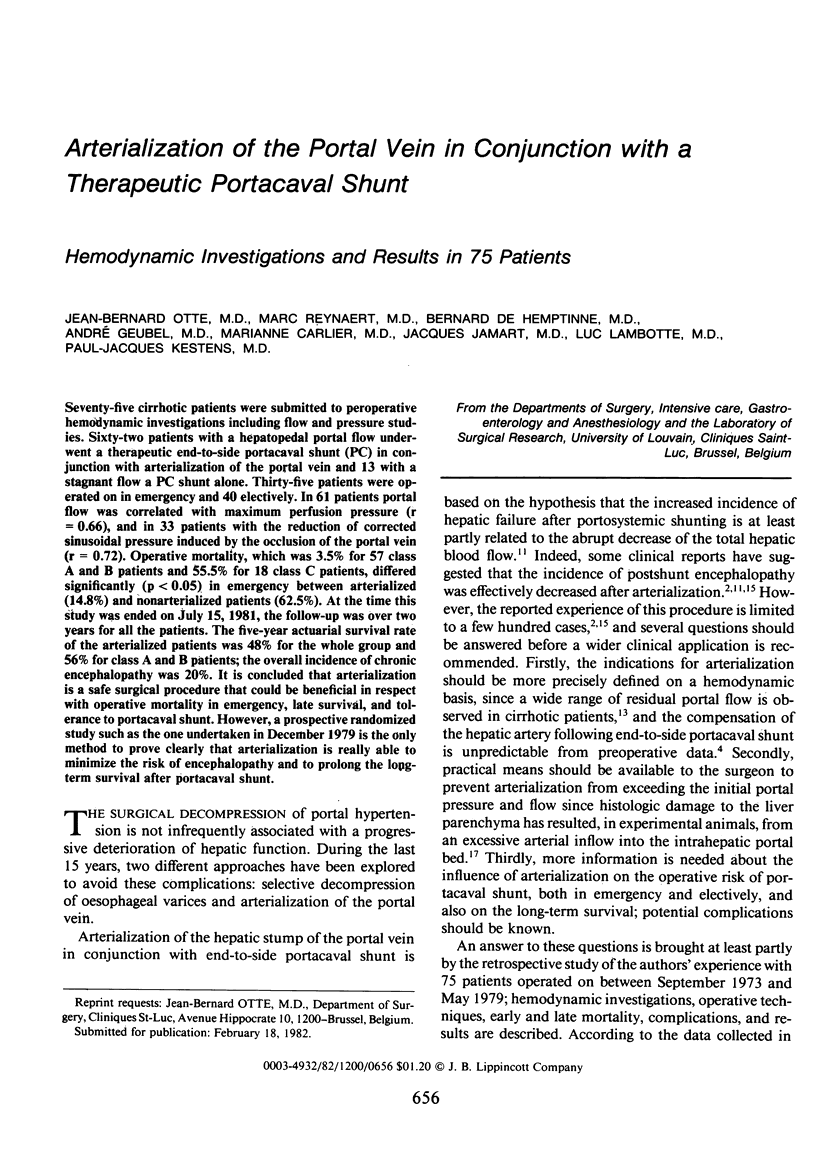
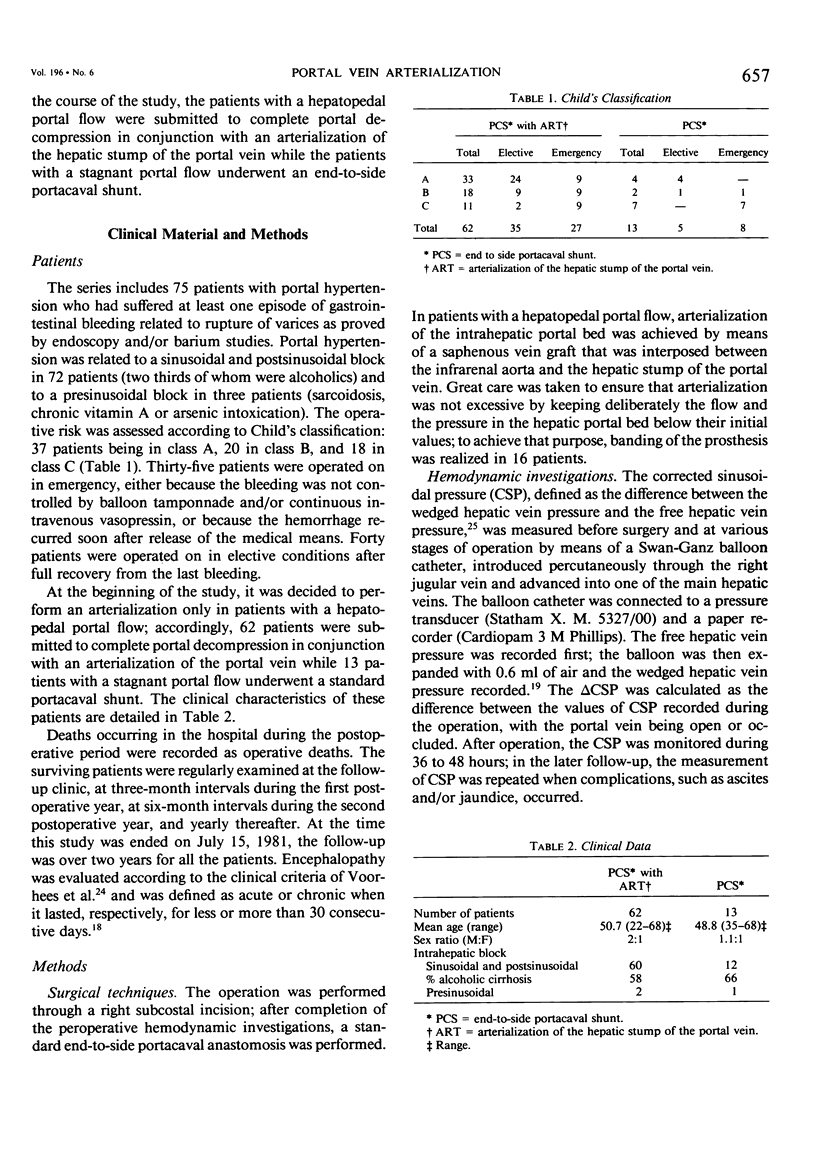
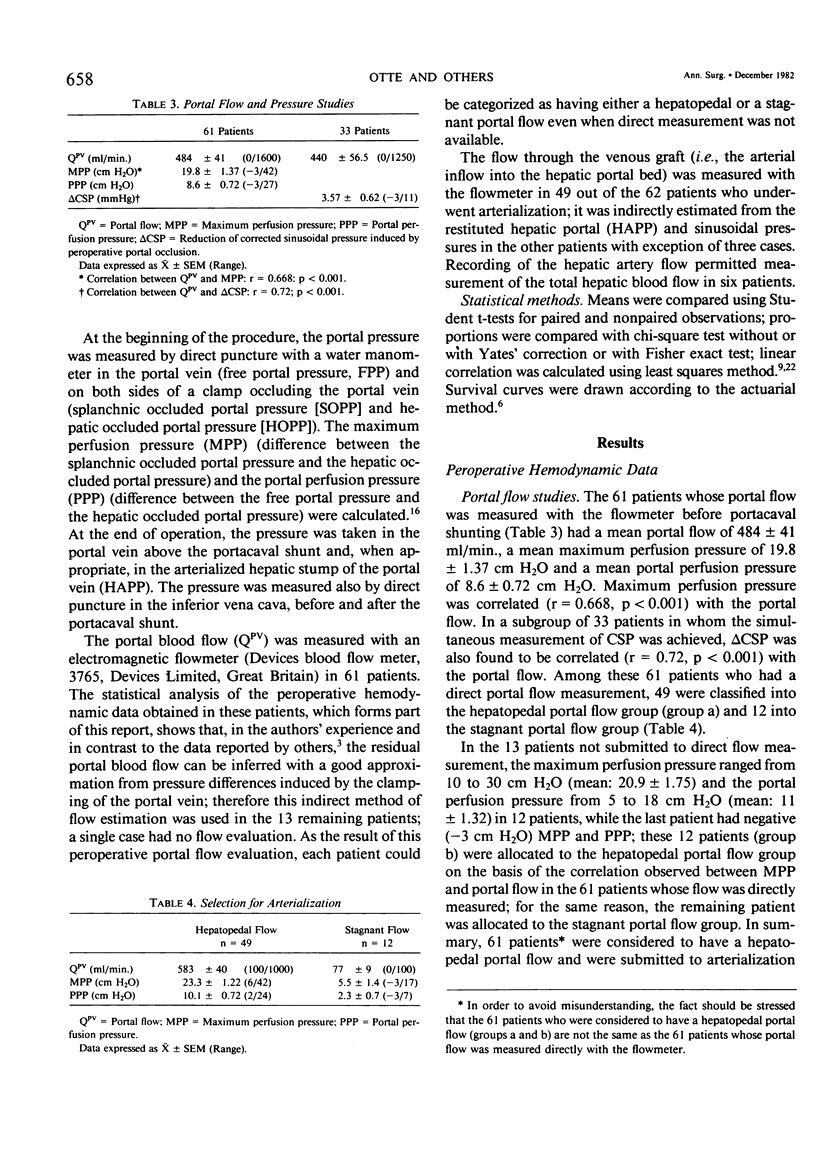
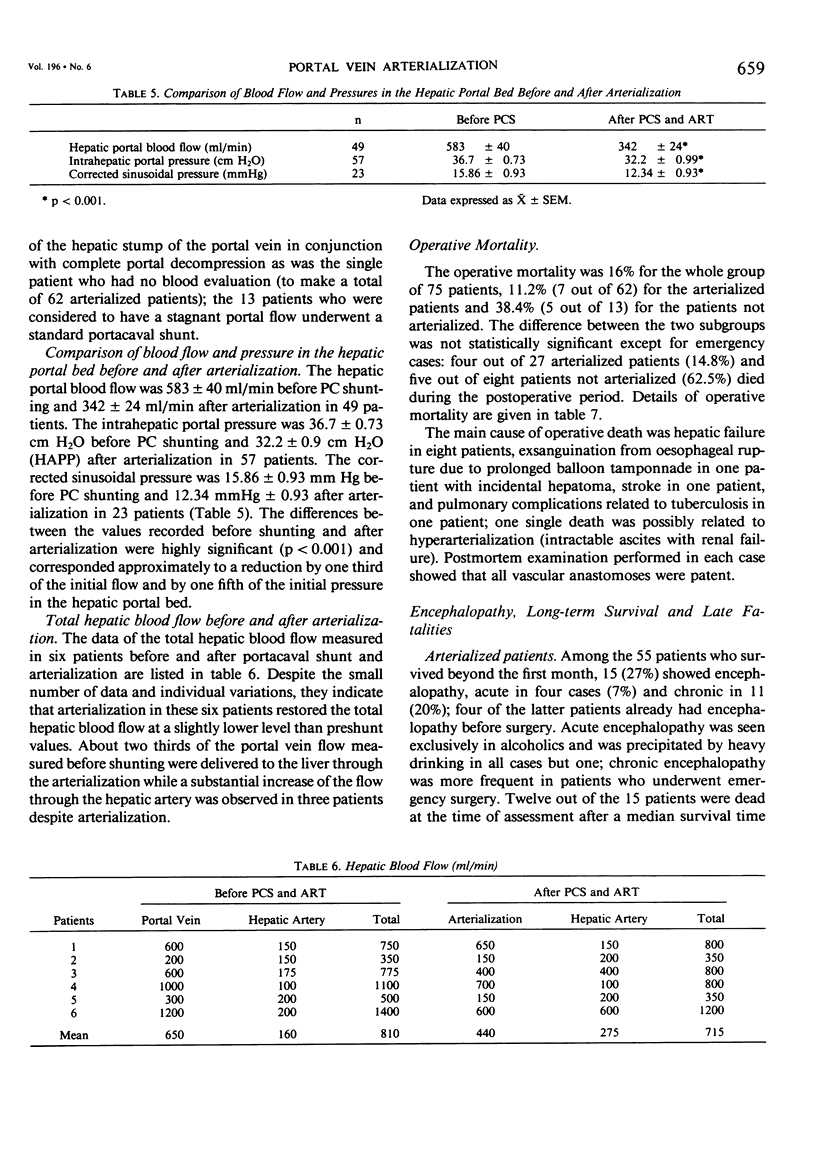
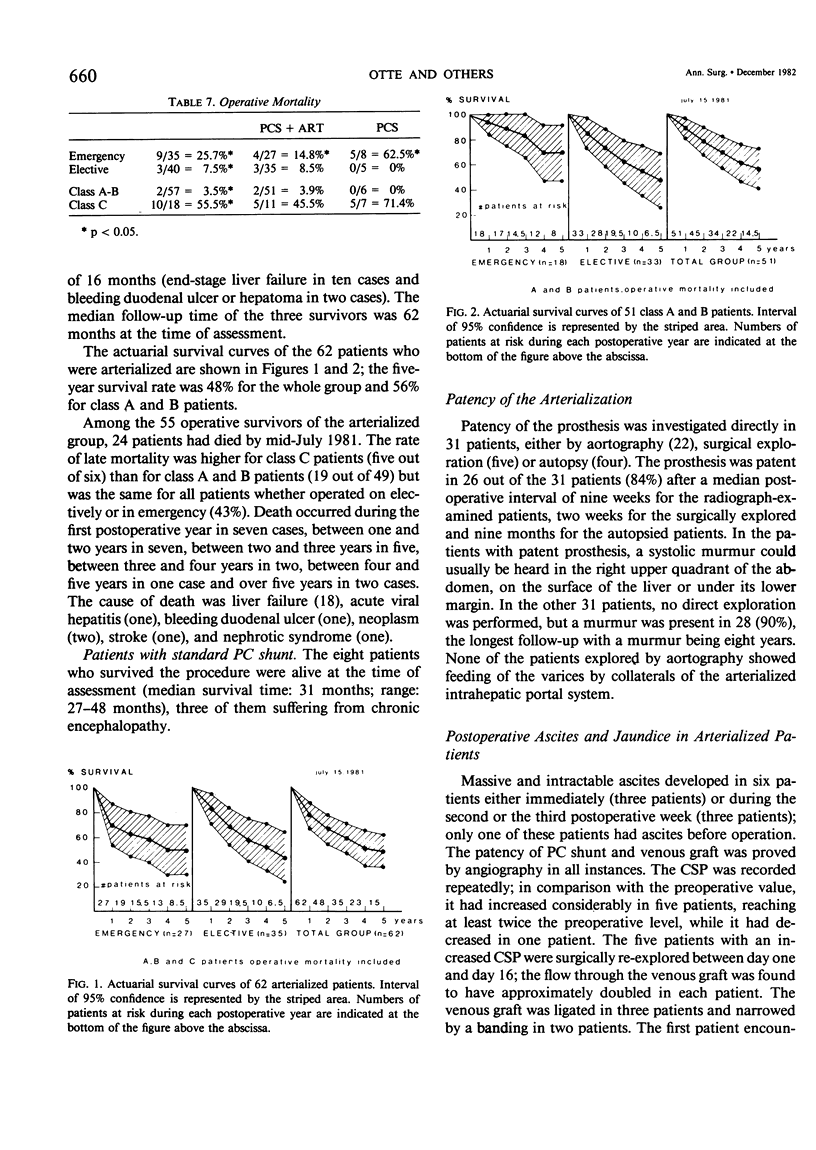
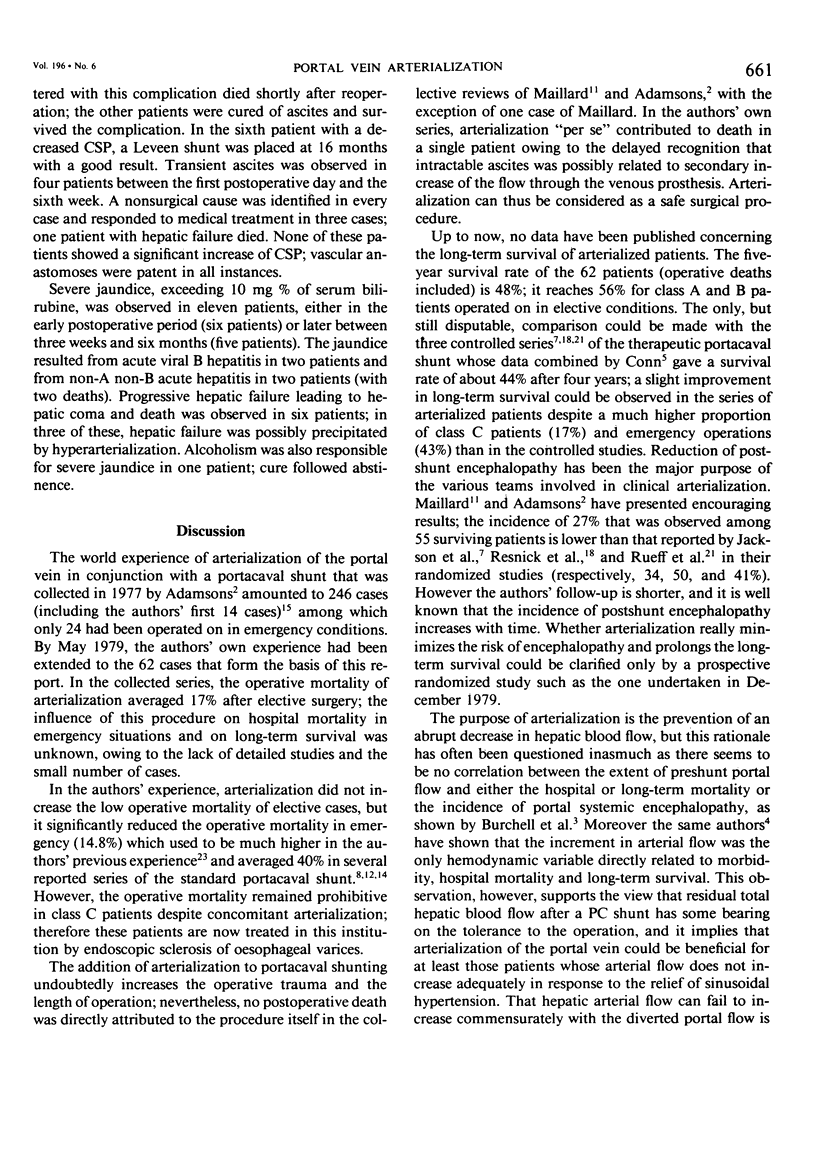
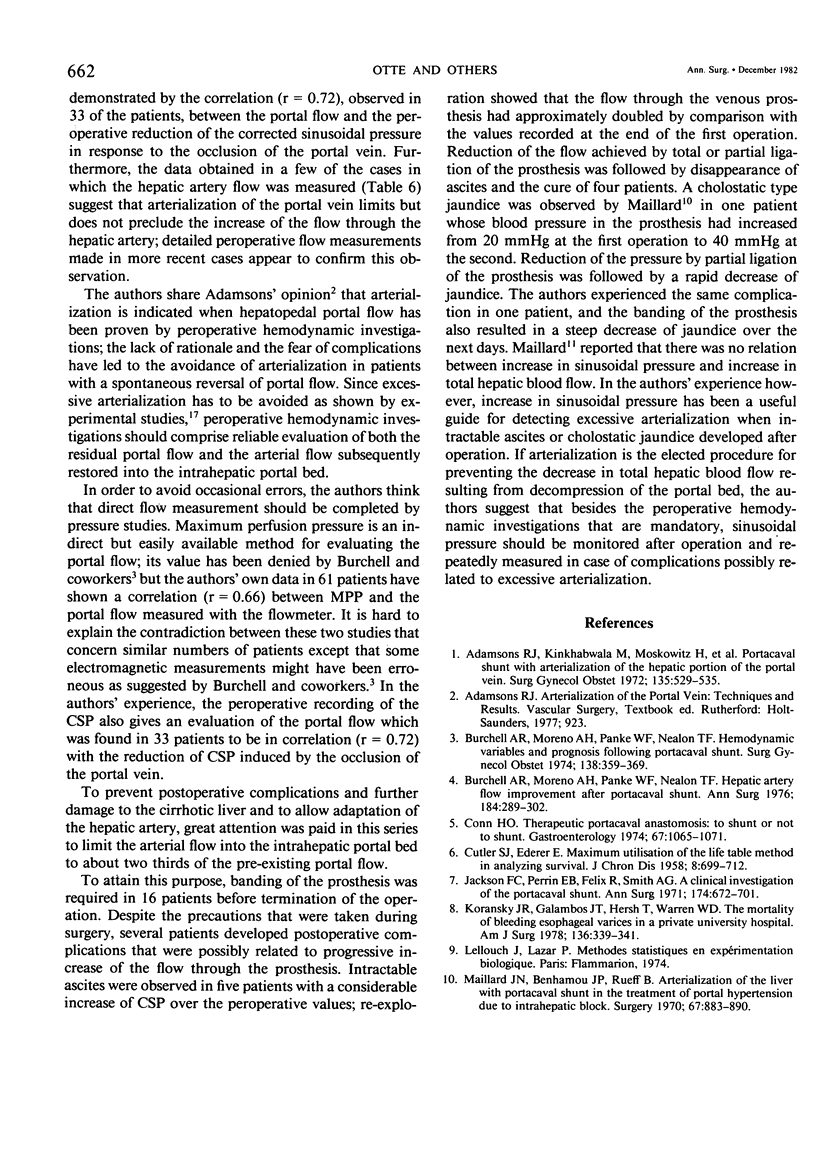
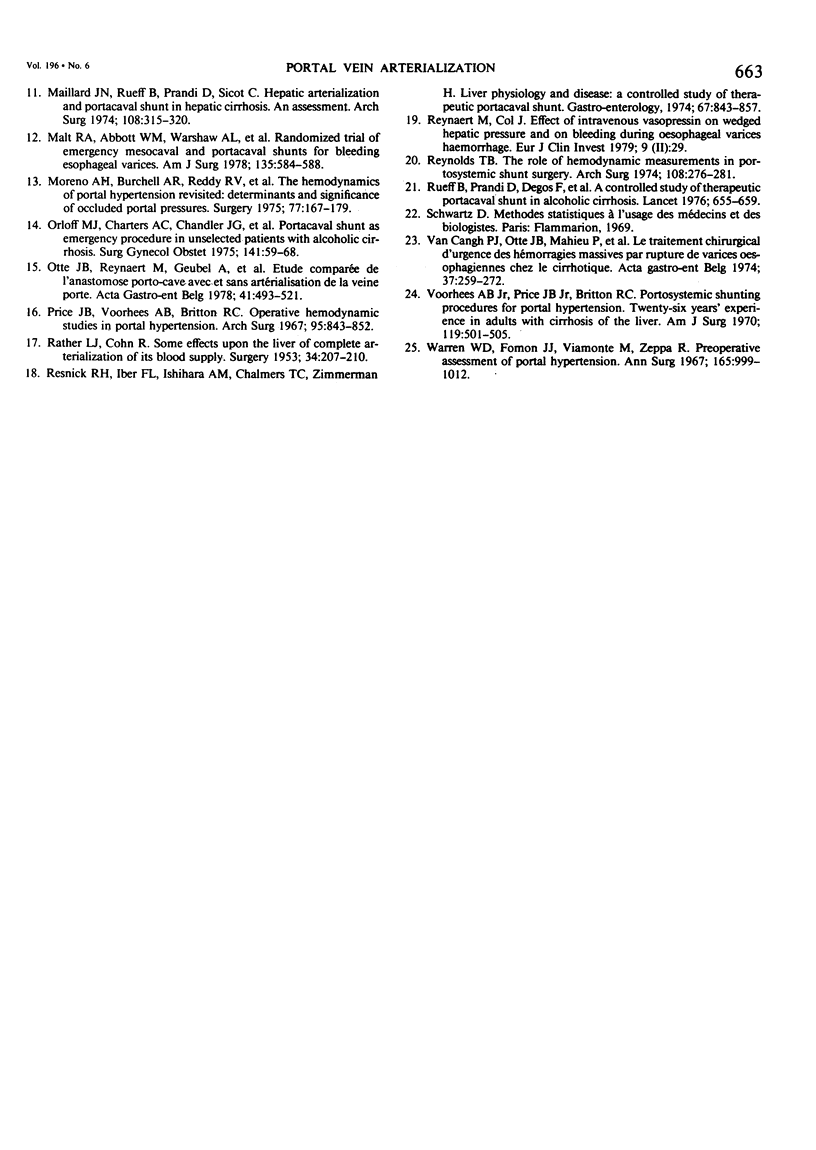
Selected References
These references are in PubMed. This may not be the complete list of references from this article.
- Adamsons R. J., Kinkhabwala M., Moskowitz H., Himmelfarb E., Minkowitz S., Lerner B. Portacaval shunt with arterialization of the hepatic portion of the portal vein. Surg Gynecol Obstet. 1972 Oct;135(4):529–535. [PubMed] [Google Scholar]
- Burchell A. R., Moreno A. H., Panke W. F., Nealon T. F., Jr Hemodynamic variables and prognosis following portacaval shunts. Surg Gynecol Obstet. 1974 Mar;138(3):359–369. [PubMed] [Google Scholar]
- Burchell A. R., Moreno A. H., Panke W. F., Nealon T. F., Jr Hepatic artery flow improvement after portacaval shunt: a single hemodynamic clinical correlate. Ann Surg. 1976 Sep;184(3):289–302. doi: 10.1097/00000658-197609000-00006. [DOI] [PMC free article] [PubMed] [Google Scholar]
- CUTLER S. J., EDERER F. Maximum utilization of the life table method in analyzing survival. J Chronic Dis. 1958 Dec;8(6):699–712. doi: 10.1016/0021-9681(58)90126-7. [DOI] [PubMed] [Google Scholar]
- Conn H. O. Therapeutic portacaval anastomosis: to shunt or not to shunt. Gastroenterology. 1974 Nov;67(5):1065–1071. [PubMed] [Google Scholar]
- Jackson F. C., Perrin E. B., Felix W. R., Smith A. G. A clinical investigation of the portacaval shunt. V. Survival analysis of the therapeutic operation. Ann Surg. 1971 Oct;174(4):672–701. doi: 10.1097/00000658-197110000-00012. [DOI] [PMC free article] [PubMed] [Google Scholar]
- Koransky J. R., Galambos J. T., Hersh T., Warren W. D. The mortality of bleeding esophageal varices in a private university hospital. Am J Surg. 1978 Sep;136(3):339–341. doi: 10.1016/0002-9610(78)90290-8. [DOI] [PubMed] [Google Scholar]
- Maillard J. N., Benhamou J. P., Rueff B. Arterialization of the liver wh portacaval shunt in the treatment of portal hypertension due to intrahepatic block. Surgery. 1970 Jun;67(6):883–890. [PubMed] [Google Scholar]
- Maillard J. N., Rueff B., Prandi D., Sicot C. Hepatic arterialization and portacaval shunt in hepatic cirrhosis. An assessment. Arch Surg. 1974 Mar;108(3):315–320. doi: 10.1001/archsurg.1974.01350270049009. [DOI] [PubMed] [Google Scholar]
- Malt R. A., Abbott W. M., Warshaw A. L., Salm T. J., Smead W. L. Randomized trial of emergency mesocaval and portacaval shunts for bleeding esophageal varices. Am J Surg. 1978 Apr;135(4):584–588. doi: 10.1016/0002-9610(78)90041-7. [DOI] [PubMed] [Google Scholar]
- Moreno A. H., Burchell A. R., Reddy R. V., Panke W. F., Nealon T. F., Jr The hemodynamics of portal hypertension revisited: determinants and significance of occluded portal pressures. Surgery. 1975 Feb;77(2):167–179. [PubMed] [Google Scholar]
- Orloff M. J., Charters A. C., 3rd, Chandler J. G., Condon J. K., Grambort D. E., Modafferi T. R., Levin S. E., Brown N. B., Sviokla S. C., Knox D. G. Portacaval shunt as emergency procedure in unselected patients with alcoholic cirrhosis. Surg Gynecol Obstet. 1975 Jul;141(1):59–68. [PubMed] [Google Scholar]
- Otte J. B., Reynaert M., Geubel A., Lambotte L., Gribomont B., Kestens P. J. Etude comparée de l'anastomose porto-cave avec et sans artérialisation de la veine porte. Acta Gastroenterol Belg. 1978 Sep-Oct;41(9-10):493–521. [PubMed] [Google Scholar]
- Price J. B., Jr, Voorhees A. B., Jr, Britton R. C. Operative hemodynamic studies in portal hypertension. Significance and limitations. Arch Surg. 1967 Nov;95(5):843–852. doi: 10.1001/archsurg.1967.01330170151019. [DOI] [PubMed] [Google Scholar]
- RATHER L. J., COHN R. [Some effects upon the liver of complete arterialization of its blood supply. III. Acute vascular necrosis]. Surgery. 1953 Aug;34(2):207–210. [PubMed] [Google Scholar]
- Resnick R. H., Iber F. L., Ishihara A. M., Chalmers T. C., Zimmerman H. A controlled study of the therapeutic portacaval shunt. Gastroenterology. 1974 Nov;67(5):843–857. [PubMed] [Google Scholar]
- Reynolds T. B. The role of hemodynamic measurements in portosystemic shunt surgery. Arch Surg. 1974 Mar;108(3):276–281. doi: 10.1001/archsurg.1974.01350270010003. [DOI] [PubMed] [Google Scholar]
- Ros E., Small D. M., Carey M. C. Effects of chlorpromazine hydrochloride on bile salt synthesis, bile formation and biliary lipid secretion in the rhesus monkey: a model for chlorpromazine-induced cholestasis. Eur J Clin Invest. 1979 Feb;9(1):29–41. doi: 10.1111/j.1365-2362.1979.tb01664.x. [DOI] [PubMed] [Google Scholar]
- Rueff B., Prandi D., Degos F., Sicot J., Degos J. D., Sicot C., Maillard J. N., Fauvert R., Benhamou J. P. A controlled study of therapeutic portacaval shunt in alcoholic cirrhosis. Lancet. 1976 Mar 27;1(7961):655–659. doi: 10.1016/s0140-6736(76)92775-6. [DOI] [PubMed] [Google Scholar]
- Van Cangh P. J., Otte J. B., Mahieu P., Moriau M., Fiasse R., Kestens P. J. Le traitement chirurgical d'urgence des hémorragies massives par rupture de varices oesophagiennes chez le cirrhotique. Acta Gastroenterol Belg. 1974 Jun;37(6):259–272. [PubMed] [Google Scholar]
- Voorhees A. B., Jr, Price J. B., Jr, Britton R. C. Portasystemic shunting procedures for portal hypertension. Twenty-six year experience in adults with cirrhosis of the liver. Am J Surg. 1970 May;119(5):501–505. doi: 10.1016/0002-9610(70)90162-5. [DOI] [PubMed] [Google Scholar]
- Warren W. D., Fomon J. J., Viamonte M., Zeppa R. Preoperative assessment of portal hypertension. Ann Surg. 1967 Jun;165(6):999–1012. doi: 10.1097/00000658-196706000-00015. [DOI] [PMC free article] [PubMed] [Google Scholar]


